Countess Elizabeth Bathory[1],
sometimes known as the “Blood Countess”, and famously played by Ingrid Pitt in
“Countess Dracula”[2], is
legendary as a sadistic killer accused of torturing and murdering over six
hundred women and girls, allegedly bathing in their blood to keep herself young
and beautiful. Born in 1560, she married Ferenc Nádasdy whilst still in her
teens. The couple at first lived at Nádasdy Castle in Sárvár, where the young
Elizabeth often remained whilst her husband was away fighting. She inherited
his estates upon his death in 1604. Even before his death, accusations of
cruelty were made against Elizabeth, but it was not until 1610 that she was
arrested. Horrific tales of torture, of the Countess biting flesh from living
victims, and of (literally) buckets of blood were reported. Although some of
her accomplices were tried and executed, the Countess herself never came to
trial, but spent her last years incarcerated in one room in Castle Cséjte[3],
where she died in 1614.
Castle Cséjte is a ruin, having been
plundered in the 1700s. Sárvár Castle, however, remains intact, and parts of it
are open to visitors. It is, it has to be said, a long way off the beaten
track. Situated in Transdanubia in the far west of Hungary and not far from the
Austrian border, Sárvár is a considerable drive from both Budapest and Vienna
and thus unlikely to be on the itinerary of a short term visitor to either
city. The town has been developed as a spa centre for Germans and Austrians
over recent years, but it is rare to hear English spoken[4].
Apart from the spa facilities, Nádasdy Castle is its single big attraction.
Situated in the heart of the town, the castle, which was formerly surrounded by
a moat, now by green lawns, is reached via a long stone bridge. The visitor
then enters the castle via a square, white-walled tower with a pyramidal
red-tiled roof and hefty portcullis.
The peculiarity of the castle’s
architecture is now apparent: built and extended over the centuries by
successive owners, it forms a pentagon around a large central courtyard.
Perhaps a third of it is open to the public, comprising a museum and some
palatial interiors, reached via a winding staircase. It is on the wall by this
staircase that one may see a copy of a portrait of Elizabeth Bathory, showing a
richly-dressed woman with a high forehead, arched brows, a long nose and a wide
mouth. This appears to be the only reference to Elizabeth Bathory anywhere
within the castle; strangely, the country which produced such colourful
characters as Prince Miklos II “The Ostentatious” and Géza Csáth appears rather
squeamish about the notorious “Blood Countess”. Some of the displays in the
castle relate to Ferenc Nádasdy, but not to his wife. All the same, the castle
does not disappoint: the interior is an intriguing warren of interconnecting
rooms, with high ceilings and shuttered windows, chandeliers and marble floors.
The display cases are full of curios including flags and uniforms, and
fabulously ornate swords, their handles encrusted with mother of pearl or
turquoise. A tapestry depicts the wooden horse being borne into the city of
Troy, whose inhabitants, all unawares, are rejoicing. A corner of the staircase
is adorned with a marble statue of Cleopatra reclining, an asp clasped to her
bosom, its fangs deep in her flesh.
The jewel in the crown of Nádasdy Castle is
however its Festival Hall. It is decorated with seventeenth century ceiling
paintings by Hans Rudolph Miller, depicting the campaigns of Ferenc Nádasdy,
and eighteenth century frescoes by Stephan Dorfmeister, showing a series of
Biblical scenes frankly shocking in their brutality. In spite of the apparent
reticence to memorialise the castle’s most notorious mistress, one cannot help
thinking that the choice of subject matter gives a nod to the bloodthirsty
Countess: prominent amongst the depictions are scenes of savagery carried out
by women. One painting shows Samson awakening from sleep and thrusting out a
hand as though to ward off an attacker, whilst a triumphant Delilah with an
impressive décolletage brandishes an enormous pair of wicked-looking shears,
the sharp points of the blades thrusting upwards, a tangled heap of dark curls
tumbling down from them. Another painting depicts a richly-attired Jael
standing over the body of Sisera, who lies sprawled at her feet, his body limp,
his head hanging lifelessly back. In her dainty right hand Jael flourishes the
hammer which she has just used to hammer a tent peg into her victim’s skull.
The contrast between the tumbled corpse at the bottom of the picture, and
Jael’s graceful and unperturbed deportment is marked. A third picture shows
Judith and Holofernes. Holofernes lies abed, unaware of the frightful fate
about to befall him; Judith stands to the left of the picture, grasping the sword
which she has already swung high above her head, ready to deal the bloody blow
which will separate her victim’s head from his shoulders. This gallery of
female butchery is a fitting decoration for the former home of the “Blood
Countess”. The effect, at first stunningly ornate, and then upon closer
inspection so violently savage, has a slightly claustrophobic effect upon the
visitor; it is something of a relief to descend the winding staircase once
more, and step out into the sunshine.
[1] Rendered in Hungarian as Báthory Erzsébet.
[3] Cséjte is in modern Slovakia.
[4] This is also true of the staff at the castle, where virtually no
English is understood. The majority of the display labels etc. are also
exclusively in Hungarian.
Above: exterior view, Nádasdy castle.
Above: interior view.
Above: Samson and Delilah.
Above: Jael and Sisera.
Above: Judith beheads Holofernes.








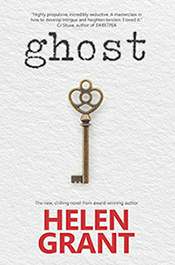
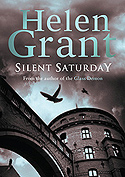
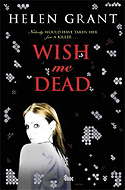
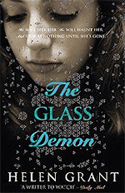

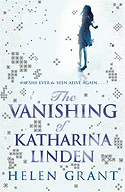
No comments:
Post a Comment